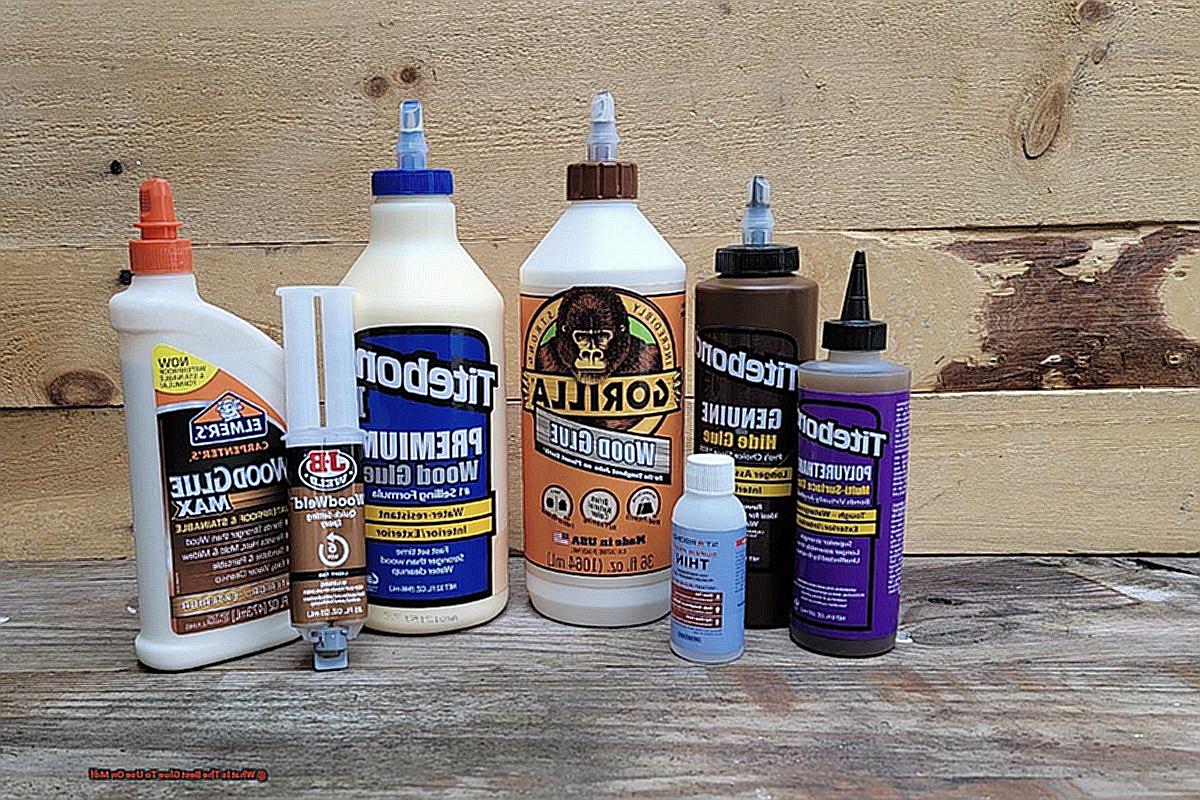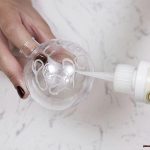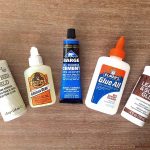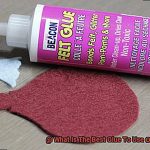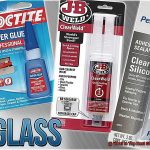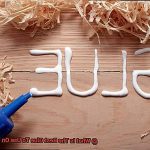Welcome to the world of crafting and woodworking, where MDF (Medium-Density Fiberboard) reigns supreme as a versatile and budget-friendly material. Whether you’re building furniture, creating intricate designs, or diving into a fun DIY project, finding the right glue for MDF is key. With so many adhesive options out there, it can be overwhelming to figure out which one will work best for this specific material.
The perfect glue for MDF needs to have certain qualities that guarantee a strong and long-lasting bond. First and foremost, it should stick effectively to the porous surface of MDF. No one wants their hard work falling apart or peeling over time. It’s also important that the glue plays nicely with any surface finishes or paints you plan on applying to your MDF masterpiece. After all, who wants a flawless design ruined by incompatible glue?
In this blog post, we’ll dive deep into the world of glues and explore various options to find the absolute best ones for MDF. We’ll provide expert recommendations and valuable insights so you can confidently choose the perfect glue for your MDF projects. Say goodbye to doubts and hello to creations that stand the test of time.
So get ready to uncover the secrets of a strong and reliable glue for MDF. Let’s make sure your crafting adventures are nothing short of amazing.
What is MDF and Why Is Glue Needed?
Contents
- 1 What is MDF and Why Is Glue Needed?
- 2 PVA Glue: Pros and Cons for MDF Projects
- 3 Epoxy Resin Adhesive: Pros and Cons for MDF Projects
- 4 Cyanoacrylate Adhesive (Super Glue): Pros and Cons for MDF Projects
- 5 Polyurethane Glue: Pros and Cons for MDF Projects
- 6 Specialized MDF Adhesives: Pros and Cons
- 7 Factors to Consider When Choosing the Best Glue for Your Project
- 8 How to Apply the Right Glue on MDF?
- 9 Conclusion
Medium Density Fiberboard (MDF) is a popular choice in woodworking projects for its affordability and versatility. However, to ensure the strength, stability, and lasting beauty of your MDF creations, the right glue is essential. In this article, we will explore why glue is necessary when working with MDF and discuss the best glue options for different applications.
Why Glue is Essential for MDF:
Creating Solid Bonds:
MDF consists of wood fibers held together by binders, which alone are insufficient for strong connections. Glue acts as an adhesive agent, securely joining panels and preventing weak structures.
Enhancing Structural Integrity:
Applying glue along MDF edges seals them, preventing moisture penetration and maintaining structural integrity. This minimizes swelling or deformation caused by moisture absorption.
Facilitating Finishing:
Glue fills gaps between MDF panels, creating a seamless surface for easier finishing. This ensures flawless results when painting or veneering, enhancing project aesthetics.
Best Glue Options for MDF:
PVA Glue:
Popular for its strong bond, versatility, and easy application. Dries clear and can be sanded once cured. Choose a PVA glue suitable for bonding with MDF’s smooth surface.
Epoxy Resin Adhesive:
Known for strength and resistance to moisture, heat, and chemicals. Ideal for high-stress areas or water resistance needs. Requires precise mixing ratios and longer curing times.
Cyanoacrylate Adhesive (Super Glue):
Forms an instant strong bond on smooth surfaces like MDF. Select a super glue formulated for wood bonding to ensure optimal adhesion.
Polyurethane Glue:
Offers strength and flexibility, perfect for MDF projects experiencing slight movement or stress. Moisture-resistant for humid or water-exposed areas. Requires clamping during curing.
PVA Glue: Pros and Cons for MDF Projects
When it comes to woodworking and crafting projects involving Medium Density Fiberboard (MDF), selecting the right adhesive is of utmost importance. Among the popular choices, PVA glue, also known as Polyvinyl Acetate glue, stands out for its exceptional bond strength and versatility. In this article, we will explore the advantages and disadvantages of using PVA glue on MDF projects.
Advantages of PVA Glue on MDF:
- Strong Bond: PVA glue excels at creating a rock-solid bond between MDF surfaces, ensuring sturdy joints in furniture or cabinetry construction.
- Ease of Use: Widely available in hardware stores, PVA glue is affordable and easy to apply with a brush or roller. It’s perfect for DIY enthusiasts and beginners.
- Quick Drying: PVA glue dries rapidly, allowing for swift progress and reducing waiting time.
- Clear Finish: Once dried, PVA glue forms a transparent bond, making it ideal for staining or painting the MDF surface.
- Clean Application: Unlike some adhesives, PVA glue leaves no residue or marks on the MDF surface, resulting in a professional finish.
Disadvantages of PVA Glue on MDF:
- Lack of Moisture Resistance: PVA glue is not waterproof and may weaken or fail if exposed to prolonged moisture or high humidity. Waterproof adhesives or sealants should be used for water-exposed projects.
- Limited Gap-Filling Ability: While PVA glue creates strong bonds between flat surfaces, it may struggle to fill larger gaps or uneven surfaces common in MDF. Specialized fillers or adhesives might be needed.
Epoxy Resin Adhesive: Pros and Cons for MDF Projects
Epoxy resin adhesive offers incredible strength, moisture resistance, gap-filling properties, and a relatively fast curing time. However, like any superhero, it also has its kryptonite. In this article, we’ll dive into the pros and cons of using epoxy resin adhesive for MDF projects, so you can make an informed decision for your next masterpiece.
The Pros:
Exceptional Strength and Durability:
Epoxy resin adhesive creates a bond that is stronger than the MDF itself, ensuring a long-lasting and reliable connection. Say goodbye to weak joints and hello to a sturdy finished product.
Resistance to Moisture and Humidity:
MDF is notorious for swelling and warping when exposed to moisture, but epoxy comes to the rescue. Its waterproof nature prevents water from seeping into the joints, reducing the risk of damage caused by changes in humidity.
Gap-Filling Properties:
Imperfections and uneven surfaces in MDF? Not a problem. Epoxy resin adhesive can fill in those gaps, creating a smooth and seamless bond. Your project will not only be strong but also look flawless.
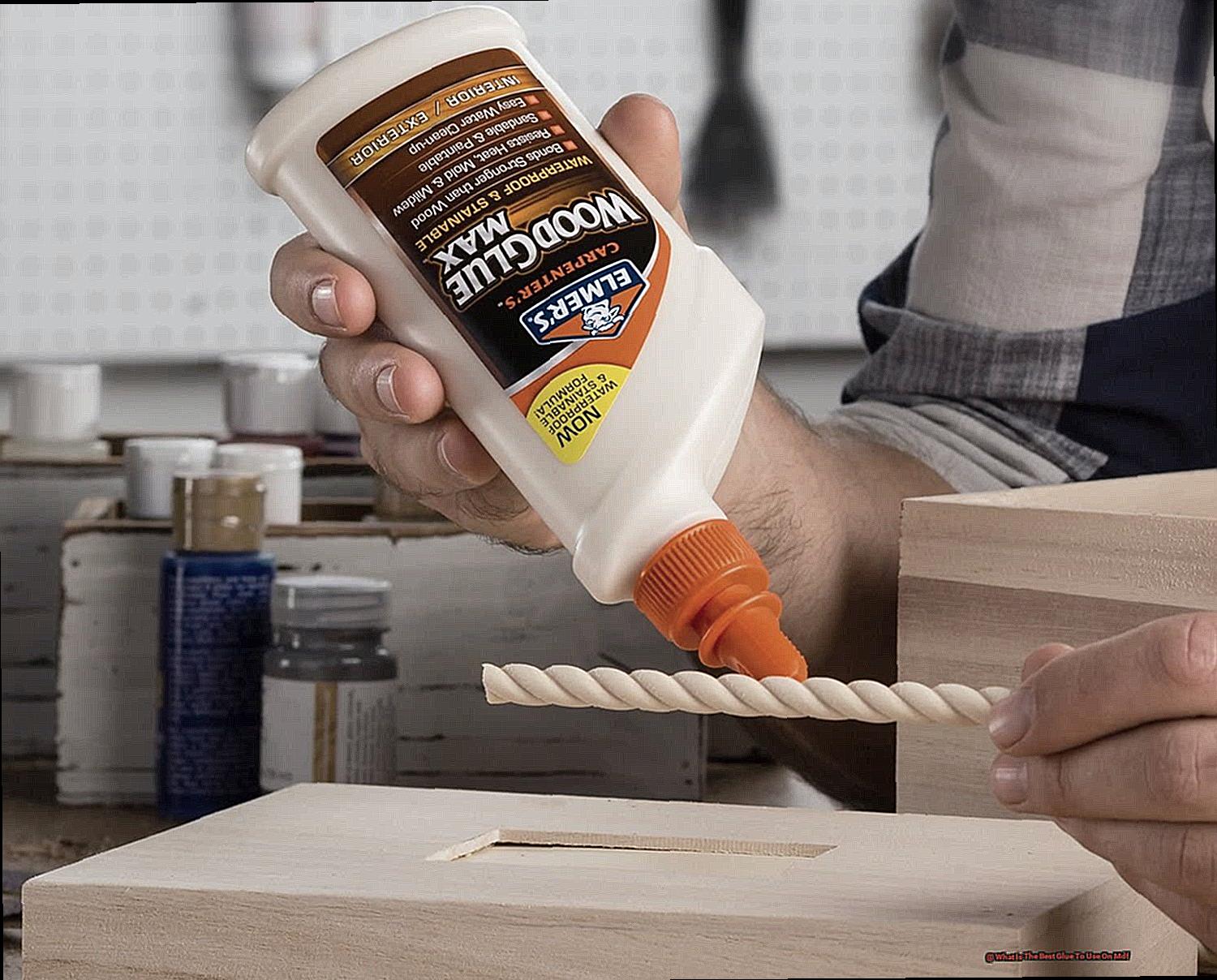
Relatively Fast Curing Time:
Time is of the essence, especially when working on time-sensitive projects or assembling multiple parts simultaneously. Epoxy can cure within minutes or hours, significantly speeding up your project completion time.
The Cons:
Toxicity during Curing Process:
As with any superhero power, there can be side effects. Epoxy resin adhesive releases fumes that can be harmful if inhaled during the curing process. Ensure you work in a well-ventilated area or wear appropriate respiratory protection to stay safe.
Longer Drying Time:
In a world of instant gratification, waiting can be a challenge. Epoxy resin adhesive takes longer to dry compared to other adhesives like cyanoacrylate. It typically requires several hours or overnight curing time before reaching its maximum strength. This may extend your project timeline and necessitate clamping or supporting structures.
Higher Cost:
With great power comes great expense. While the investment in epoxy resin adhesive is often worthwhile for projects that require a strong and reliable bond, it is generally more expensive than other adhesives due to its superior strength and durability. Consider your budget before making a decision.
Cyanoacrylate Adhesive (Super Glue): Pros and Cons for MDF Projects
Cyanoacrylate adhesive, commonly known as super glue, is a popular choice for bonding Medium Density Fiberboard (MDF) in woodworking projects. It offers several advantages that make it a reliable option for MDF projects, but there are also some limitations to consider.
Advantages:
- Fast setting time: Super glue dries and bonds quickly, saving time and allowing for efficient work. This is especially beneficial when working with intricate or delicate MDF pieces that require precise alignment.
- Strong and durable bond: Cyanoacrylate adhesive forms a tight joint that can withstand moderate stress and pressure. It is suitable for various applications, including furniture assembly, cabinetry, and crafts.
- Penetrates porous surfaces: MDF has a porous structure, and super glue can penetrate these pores, creating a secure bond that can withstand challenging conditions.
- Excellent bonding strength on smooth surfaces: Super glue provides strong adhesion on laminated or coated MDF, effectively bonding the layers together without compromising the material’s integrity.
Limitations:
- Lack of flexibility: MDF tends to expand and contract with changes in temperature and humidity. Super glue may not have enough flexibility to accommodate these movements, potentially leading to bond failure over time.
- Unsuitable for large surfaces or heavy loads: Super glue may not be sufficient to bond large surface areas or support significant weight or stress. Additional reinforcement methods like screws or dowels are recommended for secure joints in these cases.
- Brittle when cured: Cured super glue can be brittle, making the bond susceptible to cracking or breaking under impact or stress. Excessive force or pressure should be avoided to maintain the bond’s integrity.
To ensure successful bonding with super glue on MDF, proper surface preparation is crucial. The MDF should be clean, dry, and free from dust or debris.
Polyurethane Glue: Pros and Cons for MDF Projects
Polyurethane glue, a superhero in the world of woodworking, possesses extraordinary powers when it comes to bonding MDF (Medium Density Fiberboard). However, like any hero, it has its own set of weaknesses. Let’s delve into the pros and cons of using polyurethane glue for your MDF projects.
Firstly, let’s discuss the advantages. Polyurethane glue’s greatest strength lies in its ability to create an incredibly strong bond. When applied to MDF, this glue forms a connection that can withstand even the fiercest battles. Moreover, it boasts exceptional adhesive properties, ensuring a bond that is not only robust but also long-lasting.
Another superpower of polyurethane glue is its water resistance. Once cured, it forms a waterproof bond that can brave the elements. Whether you’re working on an outdoor project or something that may encounter water, this glue has got your back.
But wait, there’s more. Polyurethane glue can also fill gaps and irregularities in the MDF surface. As it cures, it expands, compensating for imperfections and creating a seamless bond. This feature is especially useful for projects where achieving precise fitting is challenging.
Versatility is another attribute worth noting. Polyurethane glue can be used not only on MDF but also on a wide range of materials such as wood, plastic, and metal. So if you need to bond MDF to other surfaces, this glue is up for the task.
Now let’s turn our attention to the cons. Firstly, polyurethane glue has a longer drying time compared to other adhesives. It may take several hours to fully cure, potentially slowing down your project’s progress. To ensure proper bonding during the curing process, be sure to factor in the extra time and use clamps.
Another weakness lies in its expansion property. While ideal for filling gaps, excessive glue or insufficient clamping pressure can cause the expanding glue to push the MDF pieces apart. This can lead to misalignment or deformation, so exercise caution during application.
Cleanup is another consideration. Polyurethane glue can be messy and challenging to remove. As it expands and foams during curing, excess glue remains, requiring thorough cleaning. Apply the glue carefully and clean up meticulously to avoid unwanted residue on your MDF surface.
Lastly, health and safety must be taken into account. Polyurethane glue emits strong fumes during curing, which can be harmful if inhaled. Work in a well-ventilated area or wear a respirator mask for protection.
Specialized MDF Adhesives: Pros and Cons
When it comes to bonding Medium Density Fiberboard (MDF), specialized adhesives are the unsung heroes of the woodworking world. These adhesives are specifically formulated to provide a strong and durable bond between MDF surfaces. But like any superhero, they also have their strengths and weaknesses. Let’s dive into the pros and cons of specialized MDF adhesives.
Pros:
- Penetration Power: One of the main advantages of specialized MDF adhesives is their ability to penetrate the porous surface of MDF, ensuring a secure bond. No loose joints here. These adhesives work their way into the fibers of the MDF, creating a strong and lasting connection.
- Easy to Use and Environmentally Friendly: These adhesives are usually water-based, which means they are easy to use, clean up, and environmentally friendly. Unlike traditional solvent-based glues, you don’t have to worry about harmful chemicals or strong odors. They provide a user-friendly experience without compromising on performance.
- Low Odor: Say goodbye to that strong glue smell. Specialized MDF adhesives have a low odor, making them perfect for indoor applications where strong odors can be a concern. Whether you’re working on furniture or cabinetry, you can enjoy a more pleasant working environment without sacrificing bond strength.
- Longer Open Time: Have you ever struggled to align your pieces before the glue sets? Well, specialized MDF adhesives often have a longer open time, giving you more time to adjust and position the pieces perfectly. This is especially beneficial when working on complex projects or when precise alignment is crucial.
- Moisture and Heat Resistance: These adhesives can handle moisture and humidity like a champ, making them ideal for areas with high moisture content, such as kitchens or bathrooms. They also offer protection against heat, which is essential for projects exposed to hot temperatures or direct sunlight. With specialized MDF adhesives, you can trust that your creations will stand up to the test of time and varying environmental conditions.
Cons:
- Higher Cost: As with any specialty product, specialized MDF adhesives tend to be pricier compared to regular wood glues. However, the higher cost is often justified by the superior performance and unique features they offer. When it comes to quality and reliability, investing in a specialized adhesive is worth considering.
- Longer Curing Time: Patience is key when working with specialized MDF adhesives because they may require longer curing times compared to other types of adhesives. While this may lengthen the overall project time, it ensures a strong and durable bond. It’s important to follow the manufacturer’s recommended curing duration for optimal results.
Factors to Consider When Choosing the Best Glue for Your Project
Choosing the best glue for your project involves considering several key factors. First and foremost, bond strength is crucial. Consider the material you are working with and choose a glue that is specifically formulated for that material. For example, if you are working with MDF, a dense and smooth material, you’ll want a glue with excellent bond strength that can withstand the test of time.
Next, think about drying time. If you’re on a tight schedule or need to move quickly with your project, opt for a glue that dries quickly. However, if you prefer more flexibility and time to adjust and position your pieces before the glue sets, choose a glue with a longer drying time.
The application method is another important factor to consider. Liquid glues are versatile and can be applied with a brush or spreader, while gel glues are thicker and better suited for vertical applications where there’s a risk of dripping. Adhesive strips are convenient for smaller projects or quick repairs.
If your project will be exposed to moisture or used in areas like bathrooms or kitchens, water resistance is key. Look for glues that are water-resistant or waterproof to ensure the bond remains strong even in damp conditions.
Safety should always be a priority. Check the toxicity of the glue you choose, especially if you’ll be working in a poorly ventilated area or have sensitivities to certain chemicals. Opt for non-toxic or low-odor glues to minimize health risks.
Consider the ease of use as well. Viscosity plays a role in control, so thicker glues may be easier to work with. Additionally, think about how easy it is to clean up any excess glue and whether the glue requires any special tools or techniques for application.
Lastly, cost is always a factor. Compare prices and read reviews to ensure you’re getting a good value for your money. Sometimes investing in a higher-quality glue may be worth it in the long run.
How to Apply the Right Glue on MDF?
In this comprehensive guide, we will reveal the secrets to applying the perfect glue on MDF, ensuring that your creations stand strong and sturdy.
Selecting the Perfect Glue:
The first step in applying the right glue on MDF is choosing the perfect adhesive. One popular choice is carpenter’s glue or PVA glue. This versatile adhesive forms a robust bond and is readily available. Another option is epoxy resin glue, renowned for its exceptional strength and durability.
Prepping for Success:
To achieve a strong bond, proper surface preparation is crucial. Start by thoroughly cleaning the MDF surface, removing any dirt or debris that could hinder adhesion. Then, lightly sand the surface using fine-grit sandpaper to create a rough texture that enhances bonding. Ensure to remove any sanding dust before proceeding.
Applying with Precision:
When it’s time to apply the glue, do so evenly onto the MDF surface using a brush or roller. Remember, less is more – avoid applying excessive amounts of glue as it can weaken bonds and cause warping. A thin, even layer of glue is sufficient for most applications.
Pressing for Perfection:
After applying the glue, firmly press the two surfaces together. Utilize clamps or weights to hold them in place until the glue dries completely. This step guarantees a tight bond and prevents any movement that could compromise strength and durability.
Time to Dry:
The drying time for MDF glues varies depending on factors such as adhesive type and environmental conditions like temperature and humidity. Consult the product instructions for specific drying times. As a general rule, allow at least 24 hours for the glue to dry before subjecting it to stress or strain.
Conclusion
When it comes to bonding MDF, choosing the right glue is crucial for a strong and durable result. So, what is the best glue to use on MDF? Look no further than polyvinyl acetate (PVA) glue. This versatile adhesive is known for its exceptional bonding capabilities on porous surfaces like MDF.
With its water-based formulation, PVA glue is easy to work with and provides a secure bond that won’t let you down. Whether you’re assembling furniture, crafting intricate designs, or tackling DIY projects, PVA glue offers the reliability and strength you need.
But why stop at just any PVA glue? Opt for a high-quality brand that guarantees excellent adhesion and long-lasting results. These top-tier options often come with added benefits such as quick drying times and resistance to moisture, ensuring your MDF creations stay intact even in challenging environments.
So, don’t settle for subpar adhesives when working with MDF. Choose PVA glue for its superior bonding properties and invest in a reputable brand that delivers optimal performance.

